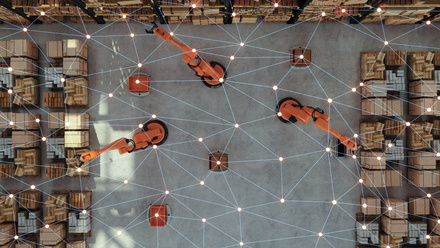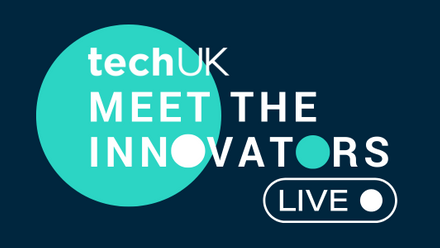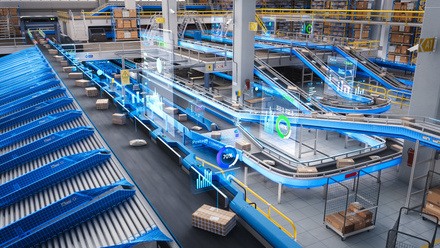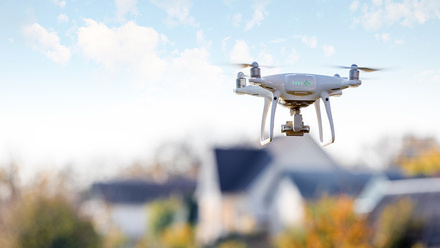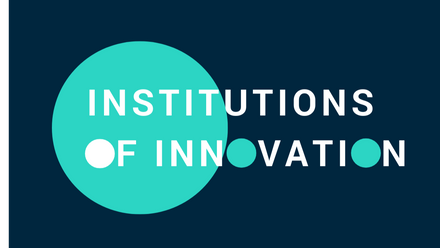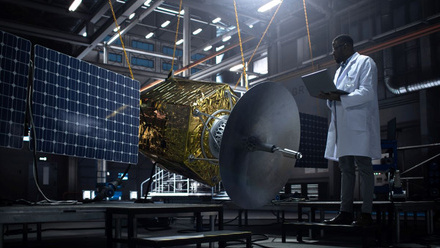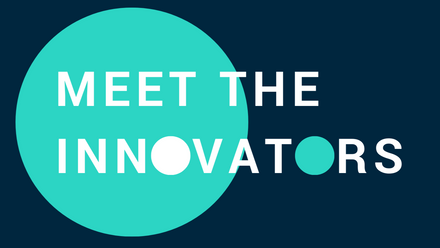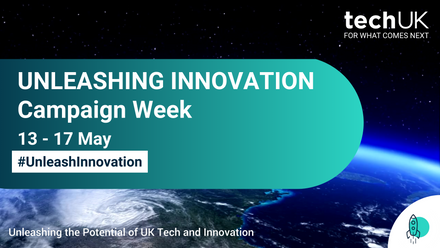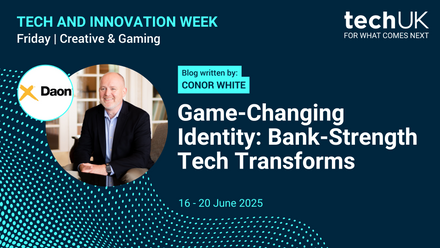Removing the Rotten Apple: Maintaining Battlefield Communications in the Face of Quantum-level Compromise
Guest blog from Michael Murphy, Deputy CTO, Arqit Quantum Inc.
UK Breakthrough in Quantum-Safe Security for IoMDT
A pivotal moment has arrived as UK innovation has pioneered groundbreaking technology for securing the Internet of Military Defence Things (IoMDT). Military or defence systems operating in hostile environments are at risk from both physical and cyber-attacks – including the looming possibility of a quantum attack, whether from future advances or data harvested today for decryption later. Any compromise poses grave risks to national security and human life.
Unmanned Systems: Challenges and Innovations
Unmanned aerial, surface, and underwater systems bring immense complexity to our networks, a need for unprecedented scaling, and a call to dynamically meet evolving demands in real time. These advancements of unmanned vehicle systems are of critical strategic importance, heavily used in both sides of conflict. Simultaneously, unmanned vehicle systems bring formidable challenges in terms of security as adversaries increasingly resort to sophisticated attacks aiming to disrupt, infiltrate, or sabotage military operations. Unmanned systems often operate as part of a swarm, leveraging the principles of swarm intelligence to carry out complex tasks.
Real-Time, Quantum-Safe Self-Healing Mesh for UAV Networks
Swarms of Unmanned Aerial Vehicles (UAVs) act as a mesh-coordinated network where the compromise of a single UAV's secret encryption keys threatens the security of all peers. This can be addressed with real-time self-healing of a UAV secure mesh using quantum-safe symmetric key management, as demonstrated at the UK Ministry of Defence’s Battle Lab in Dorset, November 2023.
The loss of a single UAV should not jeopardize the mission of its fleet. But, if the secret encryption keys are extracted from a captured UAV, all future communication of its peers is vulnerable. This self-healing mesh allows a network of UAVs to autonomously detect, diagnose, and rectify issues or disruptions in their communication or operational systems in real-time. This includes rerouting data, reconfiguring network settings or redistributing workload among other UAVs in the network. Thus, the system can maintain operational continuity and immediately respond to any threats or malfunctions which is crucial for UAVs engaged in time-sensitive or critical missions. This feature allows a UAV network to automatically recover from faults or attacks without human intervention. Immediate reconfiguration of a UAV secure mesh is a sophisticated and dynamic capability that ensures resilience, operational integrity, and security of UAV networks, particularly critical in defence applications where the reliability and security of unmanned systems are paramount. This secure mesh can be realized through quantum-safe symmetric key agreement and dynamic group key architecture.
Efficient Symmetric Key Agreement for IoT Challenges
UAV fleets make an excellent case study for the challenges faced in the Internet of Things (IoT) era. Real-time battlefield monitoring brings with it the need to marshal and synthesize data from sensors across all domains and react in real time, all while operating at military grade protection levels; this leads to an increased processing burden. We cannot further saddle the resource-constrained devices of IoT with bloated cryptography; instead, we must rely on efficient symmetric bulk encryptors like AES, or even more lightweight designs such as the new NIST standard ASCON. Historically, this has led to physical key management solutions where keys are manually loaded into devices and rekeying only performed when the device returns from its mission. The twenty-first century offers much richer electronic key management solutions, based on symmetric cryptography.
Already employed for decades at the enterprise level, symmetric key management avoids the inconvenience and expense of manual processes, but also the patchy security history of heavyweight Public Key Infrastructure, which is too demanding for IoT devices that typically have limited processing and storage capabilities. Moreover, symmetric keys can be used to orchestrate secure keys for a group. Efficient dynamic rekeying can redefine the operational group if endpoints need to be quarantined. Most importantly, the efficiency and low resource intensity of symmetric key management means that a zero-trust approach to security is truly possible for an ecosystem of potentially millions of IoT devices. In the cloud era, key management can be offered as a distributed, highly available service, even on the battlefield.
Babcock’s SwarmCore and Arqit’ SKA Platform™: a seamless integration for secure communications in combat scenarios
Returning to the UK Ministry of Defence’s Battle Lab, a real-life combat scenario simulation unfolds. Two Unmanned Ground Vehicles (UGVs) handle logistics and intelligence, surveillance, and target acquisition, accompanied by two UAVs of varying sizes and capabilities, all operating autonomously. A mobile command and control centre housed in a medium-sized van oversees operations, serving as the hub for Babcock’s SwarmCore software. SwarmCore collects, processes, and distributes information to nodes (UXVs) on its network, facilitating communication over a DTC mesh radio on a 2.4GHz network. Encryption keys are managed seamlessly through Arqit’s Symmetric Key Agreement (SKA) software, integrated directly into SwarmCore, ensuring secure communication. In a simulated compromise scenario, where a UAV is captured, the self-healing mesh activates, allowing the remaining UAVs to update their keys without compromising security. Each UAV receives specific information to update its key, ensuring the captured UAV is fully excluded. Despite challenges like patchy 4G internet signals, the mission proceeds securely and without pause.
Maximising Efficiency with SKA Deployment
The deployment of the SKA platform minimises SWaP and reduces OPEX and CAPEX through removal of expensive high-grade cryptographic hardware and burdensome key management policies. Endpoints are strongly and continuously authenticated, with a separate key that is forwardly rotated (ratcheted) on a frequent basis. Constant authentication reduces the threat of spoofing and denial-of-service (DoS) attacks. Endpoints can be managed in real-time like never before, with all controls integrated directly into the customers’ existing command centre. Device groups can be created and reformed on the fly, quarantined, and readmitted to the network and mission, with complete removal of the authentication key to deny devices if required. The key management is agnostic to the communications method, hardware, software, and network protocol. This adaptivity provides a wide range of network capabilities including the ability to isolate C2 and ISR channels with separate rotating symmetric keys, or to nest and wrap data and communication tunnels to minimize the footprint on the wire.
Future-Proofing IoMT with Symmetric Key Agreement
The Internet of Military Defence Things is a rapidly evolving set of problems and opportunities. It demands solutions that are simple to deploy, agile to reconfigure, and secure against horizon threats. Symmetric key management meets all these requirements and lays a platform for future innovation to meet challenges that we might not have reached our awareness. By harnessing the power of symmetric key management, we are not only addressing the current demands of the Internet of Military Defence Things but also establishing a resilient foundation for safeguarding against the unforeseen challenges of tomorrow's digital battlegrounds.
techUK – Unleashing UK Tech and Innovation
The UK is home to emerging technologies that have the power to revolutionise entire industries. From quantum to semiconductors; from gaming to the New Space Economy, they all have the unique opportunity to help prepare for what comes next.
techUK members lead the development of these technologies. Together we are working with Government and other stakeholders to address tech innovation priorities and build an innovation ecosystem that will benefit people, society, economy and the planet - and unleash the UK as a global leader in tech and innovation.
For more information, or to get in touch, please visit our Innovation Hub and click ‘contact us’.
Latest news and insights
Other forms of content
Sprint Campaigns
techUK's sprint campaigns explore how emerging and transformative technologies are developed, applied and commercialised across the UK's innovation ecosystem.
Activity includes workshops, roundtables, panel discussions, networking sessions, Summits, and flagship reports (setting out recommendations for Government and industry).
Each campaign runs for 4-6 months and features regular collaborations with programmes across techUK.
techUK's latest sprint campaign is on Robotics & Automation technologies. Find out how to get involved by clicking here.
Running from September to December 2023, this sprint campaign explored how the UK can lead on the development, application and commercialisation of space technologies, bring more non-space companies into the sector, and ultimately realise the benefits of the New Space Economy.
These technologies include AI, quantum, lasers, robotics & automation, advanced propulsion and materials, and semiconductors.
Activity has taken the form of roundtables, panel discussions, networking sessions, Summits, thought leadership pieces, policy recommendations, and a report. The report, containing member case studies and policy recommendations, was launched in March 2024 at Satellite Applications Catapult's Harwell campus.
Get in touch below to find out more about techUK's ongoing work in this area.
Event round-ups
Report
Insights
Get in touch
Running from January to May 2024, this sprint campaign explored how the UK can lead on the development, application and commercialisation of the technologies set to underpin the Gaming & Esports sector of the future.
These include AI, augmented / virtual / mixed / extended reality, haptics, cloud & edge computing, semiconductors, and advanced connectivity (5/6G).
Activity took the form of roundtables, panel discussions, networking sessions, Summits, and thought leadership pieces. A report featuring member case studies and policy recommendations was launched at The National Videogame Museum in November 2024.
Get in touch below to find out more about techUK's future plans in this space.
Report
Event round-ups
Insights
Get in touch
Running from July to December 2024, this sprint campaign explored how the UK can lead on the development, application and commercialisation of web3 and immersive technologies.
These include blockchain, smart contracts, digital assets, augmented / virtual / mixed / extended reality, spatial computing, haptics and holograms.
Activity took the form of roundtables, workshops, panel discussions, networking sessions, tech demos, Summits, thought leadership pieces, policy recommendations, and a report (to be launched in 2025).
Get in touch below to find out more about techUK's future plans in this space.
Event round-ups
Insights
Get in touch
Running from February to June 2025, this sprint campaign is exploring how the UK can lead on the development, application and commercialisation of robotic & automation technologies.
These include autonomous vehicles, drones, humanoids, and applications across industry & manufacturing, defence, transport & mobility, logistics, and more.
Activity is taking the form of roundtables, workshops, panel discussions, networking sessions, tech demos, Summits, thought leadership pieces, policy recommendations, and a report (to be launched in Q4 2025).
Get in touch below to get involved or find out more about techUK's future plans in this space.
Upcoming events
Insights
Event round-ups
Get in touch
Campaign Weeks
Our annual Campaign Weeks enable techUK members to explore how the UK can lead on the development and application of emerging and transformative technologies.
Members do this by contributing blogs or vlogs, speaking at events, and highlighting examples of best practice within the UK's tech sector.
Summits
Tech and Innovation Summit 2025
Tech and Innovation Summit 2023
Tech and Innovation Summit 2024
Receive our Tech and Innovation insights
Sign-up to get the latest updates and opportunities across Technology and Innovation.








